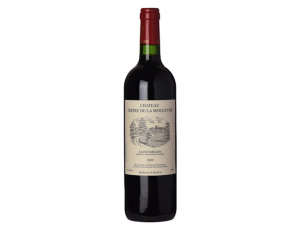You have no items in your shopping cart.
Wine Saint-Émilion
Saint-Émilion, a medieval town classified as a UNESCO World Heritage Site, has two red wine appellations: Saint-Émilion and Saint-Émilion Grand Cru. The vineyard extends over 9 communes. To the east of the town, a limestone plateau overlooking the Dordogne forms the appellation area. It is limited to the North by the Barbanne river. Read more on Saint-Émilion
-
Top Selling
-
Top Selling
-
Top Selling
- -26%
Appellation Saint-Émilion
The Saint-Émilion appellation dates back to prehistoric times.
The vineyard of Saint-Émilion dates back to Prehistory, probably to the Upper Paleolithic, between 35000 and 10000 BC. It was in 56 BC that the first wine amphora were found. The forest was cleared at this time in order to plant the first vines. Grape varieties originating from the Marseille region are grafted onto the local vine stocks. Villas equipped with crushers and vats and have been found, attesting that wine was produced in the region at that time.
In 97 AD, the Roman Emperor Domitius uprooted the vast majority of vines in order to eliminate the stiff competition from Italian wines. This explains why the expansion of the vineyard was completely stopped at that time, and this, until the end of the 3rd century. The name of the AOC was given to it in the 8th century, in homage to a monk named Emilion who lived there.
These sumptuous wines produced in Saint-Emilion were quickly noticed by Louis XIV who nicknamed them "Nectar of the Gods". In fact, a statue of Louis XIV bearing the inscription: "Saint-Émilion, nectar of the Gods" can still be seen in the Cour d'honneur at the Château de Versailles.
The first French wine syndicate was founded in 1884, the Conseil des vins de Saint-Émilion, which defines a specific classification for the wines of the AOC. The Appellation d'origine contrôlée, as well as its specifications, were validated in 1936. Three new AOCs were added in 1954: Saint-Emilion Grand Cru, Saint-Emilion Grand Cru Classé and Saint-Emilion Premier Grand Cru Classé.
In 1948, a quality control gave rise to a new classification, two years later, in 1950. In 1952, it is regulated with the INAO and will be definitively ratified in 1955. It is revised every 10 years, which is an additional guarantee of the exceptional quality of Saint-Emilion wines. The 2012 classification is the 6th to date. At the top of the list: 64 grands crus classés out of 82 properties, and 18 premiers grands crus classés.
The Saint-Emilion vineyard is a World Heritage Site
.The Saint-Émilion appellation, located in the Libournais region, runs along the right bank of the Dordogne. It covers 5,600 ha and produces an average of 235,000 hl/year of red wine. It is necessary to distinguish the AOC Saint-Émilion from the appellations Saint-Émilion grand cru, grand cru classé and premier grand cru classé. The quality criteria and specifications are different for each of them. The town of Saint-Émilion is a real jewel of the Libourne region, which has earned it a classification as a World Heritage Site by UNESCO.
The temperate, oceanic microclimate ensures rainfall spread throughout the year and hot, dry summers, which is ideal for the vine. The proximity of the two rivers, the Isle and the Dordogne, helps to temper the annual temperature ranges, which remain rather moderate.
There are four types of soil in Saint-Émilion: chalky, clayey-chalky, sandy-clayey hillside soils, gravel soils. The limestone soils allow, by absorbing water from bad weather, capillary rise which feeds the vine. The clay-limestone soils store water when the weather is bad and release it in the summer, ensuring a constant water supply throughout the year. At the foot of the slopes, the sandy-clay soils allow for deep rooting. Water can thus reach the deep layers of the soil, but the clay in the subsoil retains it and releases it when necessary.
The grape variety is 60% Merlot, combined with Cabernet Franc and Cabernet Sauvignon. Like many of the region's wines, the Saint-Émilion has a bright ruby robe with purple highlights. The nose opens with notes of red fruits, redcurrant, strawberry, raspberry, while the second, more pronounced nose offers aromatic notes of spice, pine, roast, cedar, cocoa, toast. The attack is powerful, the material is fine, the tannins are well present and firm and the mouthiness is velvety and suave.
Cellar ageing of about ten years may give it aromas of undergrowth and truffles. For exceptional years, the ageing can go up to 30 years. They go wonderfully with all meats, but particularly with game, foie gras dishes, a fine rib of beef or poultry. They should be drunk at 16°C, with a preliminary decanting of two hours.
2005 is the vintage of the millennium for Saint-Émilion
Saint-Émilion has produced a good number of exceptional wines over the last few decades. The latest great vintages to date are 2004, 2006 and 2010. 2009 was crowned millesime of the century, it was generally a very great year for Bordeaux. But it was 2005 that won the distinction of vintage of the millennium.
Saint-Émilion is full of estates to discover
Château Flouquet Invictus:
Straddling the communes of Saint-Sulpice-de-Faleyrens and Saint-Émilion, the 12 hectares of vines that make up the estate produce wines under the Saint-Émilion and Saint-Émilion grand cru appellations. David Bernard took over Château Flouquet, created by his grandfather Christian Bernard in the last century. These sandy-clay soils are worked in an ecologically responsible manner. A traditional ploughing by oxygenation allows the aromas of this exceptional land to be brought out.A technique which consists of breaking the root system in order to make it go down deeper, allows to mark even more the personality of these wines by bringing up the tastes and aromas of the terroir. It is with a mixture of traditional know-how and innovation that David Bernard brings his wines to fully express their identity.
Château de la Cour:
It was in 1994 that the Delacour family acquired Château la Rouchonne, which they renamed Château de la Cour. The family coat of arms appears on the estate's bottles with the motto "Honneur y gist", a knight's head and three silver hearts on a blue background. Plots of land with very different characteristics, in terms of micro-climate, rootstock, grape varieties allow for very original blends.The vineyard extends over 5 hectares of iron-rich gravelly-sandy soils and five hectares of gravelly-sandy hilltops with clay subsoil. The vineyard is 90% Merlot, which is rare for AOC wines, and 10% Cabernet Franc. The estate has won numerous medals at the Vignerons Indépendants competition in recent years, notably in 2017 and 2016.
Bordeaux appellations


































 TWIL - Achat de Vin
TWIL - Achat de Vin


